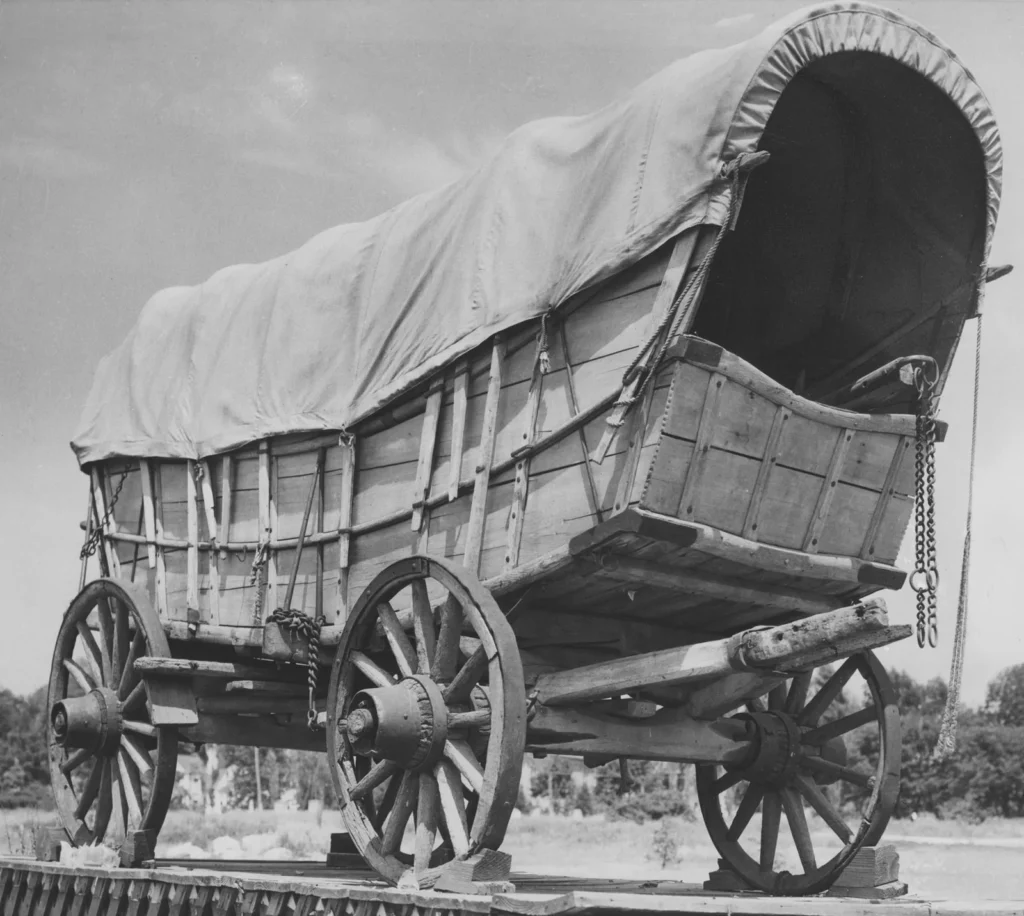Why do we drive mostly on the right in Europe?

The question may seem silly and the answer obvious. However, it could not even cross people’s minds to drive on the right. Indeed, driving on the left side of the road was for a long time the norm on the world’s roads. Even today, a third of the countries in the world drive on the left side of the road.
So why did we change sides? Let’s have a look at the history of road use together!
Let’s start with the left
During ancient times, the habit of walking on the left can be traced back to Greece, Egypt and ancient Rome! Soldiers and horsemen, mostly right-handed, walked on the left side, carrying their shields and scabbards on the left, in order to be able to draw their swords more easily.
In the Middle Ages, a common explanation is that horsemen, like those of antiquity, rode on the left side of the road. Indeed, they held the reins with their left hand in order to be able to draw their sword more easily with their right hand in case of an attack or to address friendly greetings.
Another theory is that they rode on the left side of the road to prevent the swords from touching, a sign of provocation leading to a duel. Left-handed knights are not really taken into account…
With Conestoga, we go to the right
At the end of the 18th century, a new type of cart appeared on the American market: the Conestoga. Drawn by 6 to 8 mules harnessed in pairs and equipped with 4 large wheels, it was robust and easy to handle. It quickly became an essential part of functional transportation (originally designed to transport wheat in Pennsylvania).

Source: Britannica
This cart quickly spread to all neighboring countries and similar machines also appeared in Europe. The main characteristic of the Conestoga is that it does not have a seat for the driver. This apparent detail will change the habits on the road. In order to better control the carriage, the coachman sits on the left horse of the last pair (holding the whip with his right hand). These carts then naturally start to drive on the right side, so that the coachman can watch, during crossings, the side exposed to possible brushes by another cart and that the whip is deployed on the side of the field, and not on the people crossing the cart.
Thus, in 1792, Pennsylvania made right-hand drive official: here we go! The other American states followed suit. In Europe, this cart became famous and the same practice developed.
By the end of the 18th century, a large part of Europe was driving on the right. Napoleon I is often credited with having imposed on conquered Europe the obligation to drive on the right, as opposed to the British. Napoleon would have trained his troops to begin the attack from the right flank to surprise them. But this explanation seems fanciful, for there is no relationship between the direction of travel on the roads and tactical dispositions in battle.
This tendency to drive on the right side continued with the first automobiles. They had the handbrake on the outside, on the right side so that it could be applied by the right hand with more force. The driver’s seat was therefore on the right side. At that time, the crossing maneuver was delicate: on narrow roads, the vehicles had to get as far away from each other as possible. In order to achieve this, the driver had to stay on the side of the road to avoid going off the road. The driver’s seat was on the right-hand side of the road, so the cars drove on the right side of the road.
Later, the handbrake was moved to the center of the passenger compartment. Some car manufacturers moved the driver’s seat to the left so that the brake could still be accessed by the right hand, others (like the British) did not change anything.
The English persist on the left
The United Kingdom did not appreciate the Conestoga. For geographical reasons, neither the needs in terms of land transport of goods, nor the configuration of the road network were adapted to this new vehicle.
A smaller model was preferred, equipped with a single pair of horses and, above all, a postillion seat (equivalent to the a coachman). In order not to disturb the passenger with his whip, the driver was placed on the right side (with the whip in his right hand), and could thus supervise the manoeuvres on the exposed side. The British therefore naturally continued to drive on the left side of the road.
The ” Dagen H “
Sunday, September 3, 1967 at 5 a.m.: Sweden switched from left-hand traffic to right-hand traffic. It was “Dagen H”, H-day, for “Högertrafik”, Swedish for right-hand traffic. The government took five years to organize this change, which 85% of Swedes did not want. However, all the countries bordering Sweden (Finland, Norway and Denmark) were already driving on the right, and almost all cars had left-hand drive.
The day before H-day, all the signs and traffic lights for right-hand drive were in place, wrapped in black plastic, ready to be unveiled at the appointed time. At 4:50 a.m., all vehicles were required to park on the right side of the road before being allowed to drive away at 5:00 a.m… on the right. On Monday, September 4, there were 125 accidents, none fatal. On previous Mondays, there were between 130 and 198. Iceland will follow the Swedish example on May 26, 1968.














